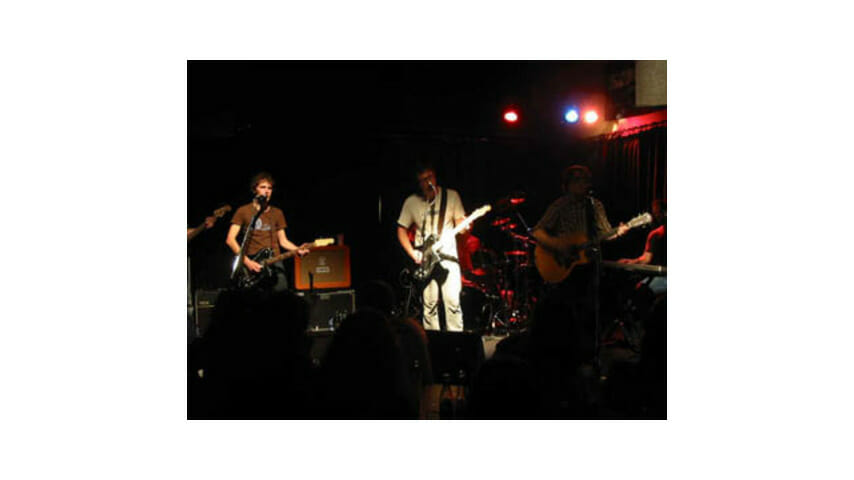
Fresh from three-day hippie fest Bonnaroo in Manchester, Tenn., Gomez and fellow English compatriots The Magic Numbers traveled 60 miles up Highway 24 to Nashville’s cozy 3rd & Lindsley for an intimate, high-energy evening of old standbys and new favorites.
The Magic Numbers promptly started the evening with an engaging set taken mostly from their self-titled debut, but with a bit of new material, as well. They’ve been touring almost non-stop since March 2005—yes, that’s 15 months, even before the record was released last June—but the foursome performed with as much energy as it did a year ago at The Forum in London. The Numbers ended their set with a countrified, Nashville-appropriate, hootenanny-conjuring jam instead of the peppy, upbeat tunes they’re known for.
Just after 9 p.m., Gomez squeezed onto the smallish stage. The five-piece, comprised of Ben Ottewell, Ian Ball, Tom Gray, Olly Peacock and Paul “Blackie” Blackburn (plus de-facto band member Dajon Everett), busted out “Bring It On”—quintessential Gomez from 1999’s Liquid Skin—to begin the show. From there the set list included mostly tracks from May release How We Operate, though it was peppered with favorites drawn from the band’s previous five studio albums—songs like “Love Is Better Than A Warm Trombone,” “Whipping Piccadilly” and “Here Comes The Breeze.” Gomez’s musicianship, though never in question, was notably verified by Peacock’s explosive drumming (highlighted in a jam session during “How We Operate”) and Ottewell’s slide guitar on the beautiful “Chasing Ghosts With Alcohol.” The latter’s unique, raspy vocals were so exquisite he left the crowd nearly silent.
As the night progressed Gomez grew more comfortable onstage, and though exhausted from Bonnaroo the band put on a great show—one which Gray described in a blog posting the following day as “a bit of a drunken car crash, the world in slow motion as musical manglement transpired…but fun nonetheless.”
It was a treat to see a band not take itself so seriously and have fun with each other onstage. During “Ruff Stuff,” Ball laughed instead of singing as Ottewell egged him on by growling his “come back” chorus off beat. As for an encore, the crowd’s cheers and pleads brought just Ottewell and Blackburn back onstage at first, and while waiting for Peacock, Ball and Gray to finish their cigarettes, Ottewell began the intro to Nick Drake’s “Black Eyed Dog.” As the other members joined them onstage, “Black Eyed Dog” somehow melted beautifully into “Free To Run,” the night’s final number.
Listeners can distinguish How We Operate from other Gomez albums—differences due mostly to the band’s work with producer Gil Norton (Pixies, Foo Fighters). The record is much tighter and cleaner than any previous release, but retains Gomez’s signature sound with sophisticated arrangements, three-part harmonies, and organic quality. It’s this distinctive sound that comes to life during the band’s shows as it reinvents songs onstage, laced with improvised lyrics and jams that last for minutes. Gomez has always said that it is truly in its element while performing, and rightly so—they’re one of the few bands worthy of a 14-hour drive, and their show in Nashville was worth every mile.